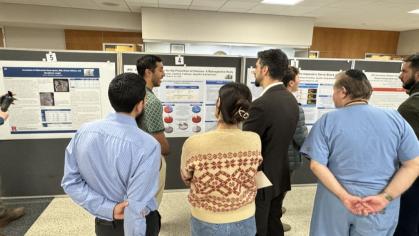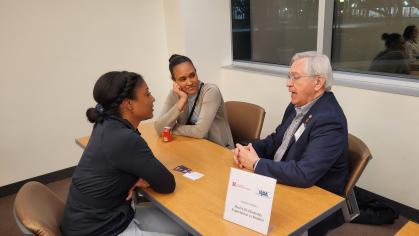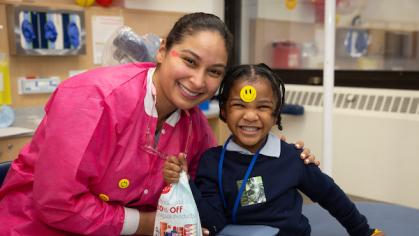Perio Residents Measure Success of New Laser Surgery Technique
In April, post-doc periodontal students learned how to perform laser surgery with new digital technology, marking RSDM as one of the first dental school’s in the nation to include it as part of the curriculum.
Since then, perio resident Mohamed Elazhri and others are monitoring the long-term aftermath of laser implant surgeries to see how patients have healed and how well they’re accepting the implants.
“Long term follow up of these cases treated is important to determine the true efficacy,’’ said Andrew Sullivan, interim chair of the Department of Periodontics. “Does the treatment stop the disease process or, better yet, does it reverse the process? Only long-term follow up will give us the answer.”
So far, the results are promising, said Sullivan. All of the residents' patients, about 15 so far, have shown no signs of complications since May.
“They’re healing very nicely,’’ said Elazhri.
In October, he presented his findings at the Northeast Implant Symposium, along with post-docs from Tufts, Columbia and NYU dental schools.
Problems that can spring from implant surgery include pain, infection and bone loss due to plaque accumulation on the implant surface. Because implant surfaces are rougher than natural teeth, plaque build-up is often more severe.
According to Elazhri, laser patients reported quick and mostly painless post-surgery recoveries, unlike those who underwent traditional surgery -- a longer process that involves sutures and results in more bleeding and soreness.
Perio laser surgery patients at RSDM will be monitored for a year to gauge their progress. The department also plans clinical studies.




